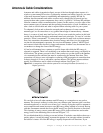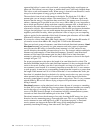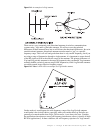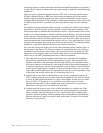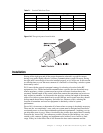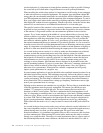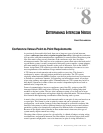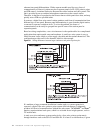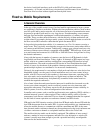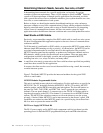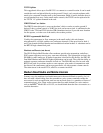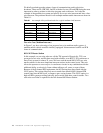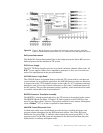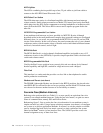
Chapter 8 - Determining Intercom Needs 113
C HAPTER
8
C
HAPTER
8
D
ETERMINING
I
NTERCOM
N
EEDS
DAVE RICHARDSON
Conference Versus Point-to-Point Requirements
As previously discussed in this book, there are at least two types of wired intercom
systems: conference (two-wire) and point-to-point (four-wire). Although the conference
style provides sufficient communications capabilities for some facilities, the point-to-point
four-wire matrix offers not only functions of the conference style, but, also other
advantageous modes. The static two-wire conference system, often seen as the back-end of
a good matrix system, is usually comprised of belt packs, power supplies, system adapters,
and some method of assigning channels to the ports of the matrix, such as the SAP612
Source Assign Panel. This scenario provides the best combination of resources to cover
most requirements of the medium to large modern broadcast facility.
A TW intercom circuit transmits and receives audio on two wires. This format is
conference by nature, with each station paralleled to each other. The TW system,
originally manufactured by RTS
™
Systems, was the first professional two-wire intercom
to include two conference channels, call signaling, and microphone-cancel, all on three
wires using ordinary microphone cable! Communication on a TW system may be full or
half duplex. Operation in either of these two modes is dependent upon factors such as
ambient noise, congestion, etc.
Forms of communication, known as conference, party-line (PL), point-to-point (PP),
interrupt fold back (IFB), and isolate (ISO) may be introduced by adding subsystem
modules to the base system. The two-wire conference system, as we shall see in larger
systems, usually requires more wiring than a digitally controlled matrix. This increase may
be a financial and engineering consideration when choosing such a system.
A matrix (four-wire) intercom circuit transmits audio on one pair of wires and receives on
a second pair. This format is point-to-point by nature and can be pictured as a star
configuration - each station connects to the center through its own multi-conductor link.
Instead of subsystems to achieve different functions, the central processor and software
permit the system to be dynamically configured for different forms of communication.
Because of the digital control inherent in most modern matrix intercoms, this type of
system usually requires much less wiring.
Choosing either of these systems for a given facility is a blend of budget, existing wiring
considerations, and potential intercom size. But another, less obvious reason, that studio
control operators might prefer a two-wire intercom, in spite of wiring difficulties, is



